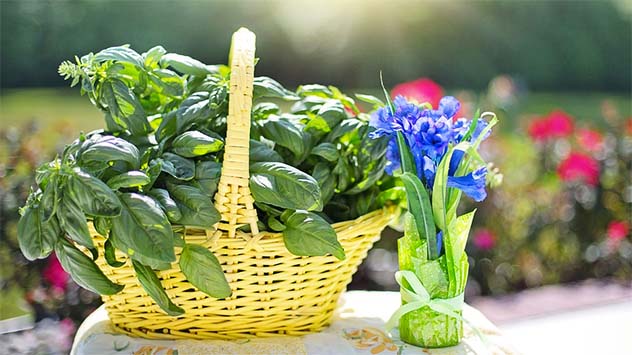How to grow basil plants?
Written by Joy
Oct 18 2021
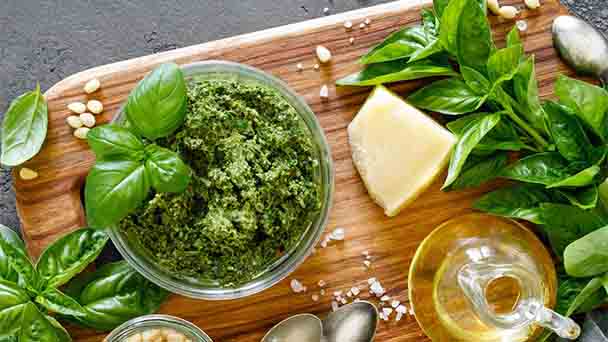
Basil plants are fragrant seasonings that can bring magical effects to ordinary dishes, and the basil growing conditions are not high. They can grow basil indoors or grow outdoors. Fresh basil plants taste very different from dried basil, even like two completely different herbs. Of course, fresh basil plants are more delicious than dried basil. In order to bring a different aroma to your cooking, let's take a look at how to grow and harvest basil, hoping to be beneficial to every gardener.
Cinnamon basil has a sweet fragrance and can produce beautiful flowers with a charming fragrance. Lemon basil contains citral. Citral is the scent of citrus fruits, and lemon basil also smells of strong lemon flavor.
Purple basil is mostly for ornamental purposes, with a charming fragrance and gorgeous flowers.
Some basil is perennial and will continue to grow in the next year after withering. For example, African blue basil (which has blue texture on the leaves) and Thai basil. But most basil is annual, and you have to plant a new batch every year.
Greek basil and fragrant basil have higher growing conditions, but they can grow tightly small bunches of leaves, which are suitable for viewing and gardening.
If you live in a hotter area, you can also grow basil outdoors.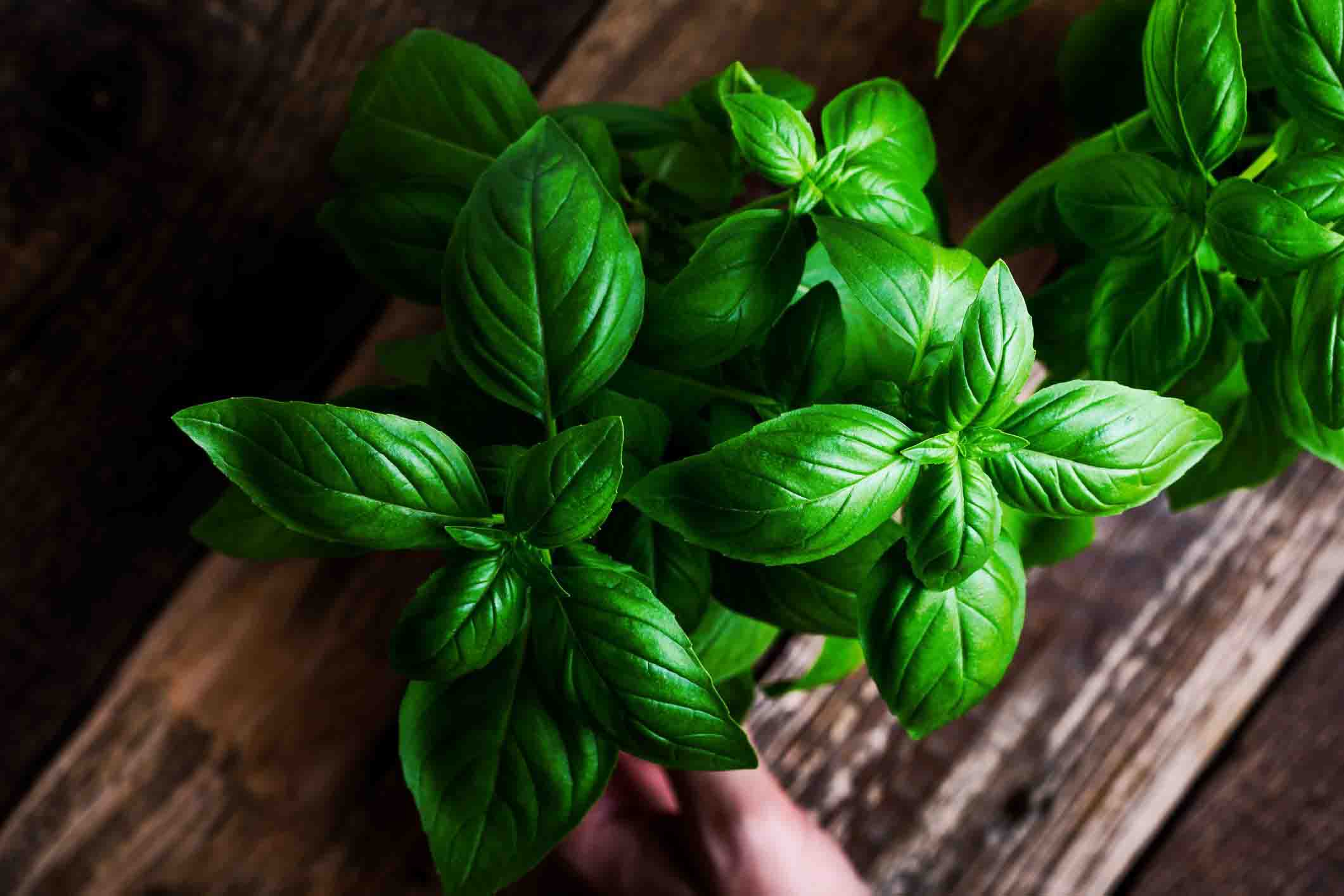 If you don't know when the last frost is, you can check the perpetual calendar or ask the local gardener.
If you don't know when the last frost is, you can check the perpetual calendar or ask the local gardener.
 When you see the first tendril-shaped green plants burrow out of the soil, it is time to remove the film. You could water the shoots twice a day and never let the soil dry out completely. When the basil plant grows to a few centimeters high and the leaves gradually mature, it's time that the basil can be moved to a large container.
When you see the first tendril-shaped green plants burrow out of the soil, it is time to remove the film. You could water the shoots twice a day and never let the soil dry out completely. When the basil plant grows to a few centimeters high and the leaves gradually mature, it's time that the basil can be moved to a large container.
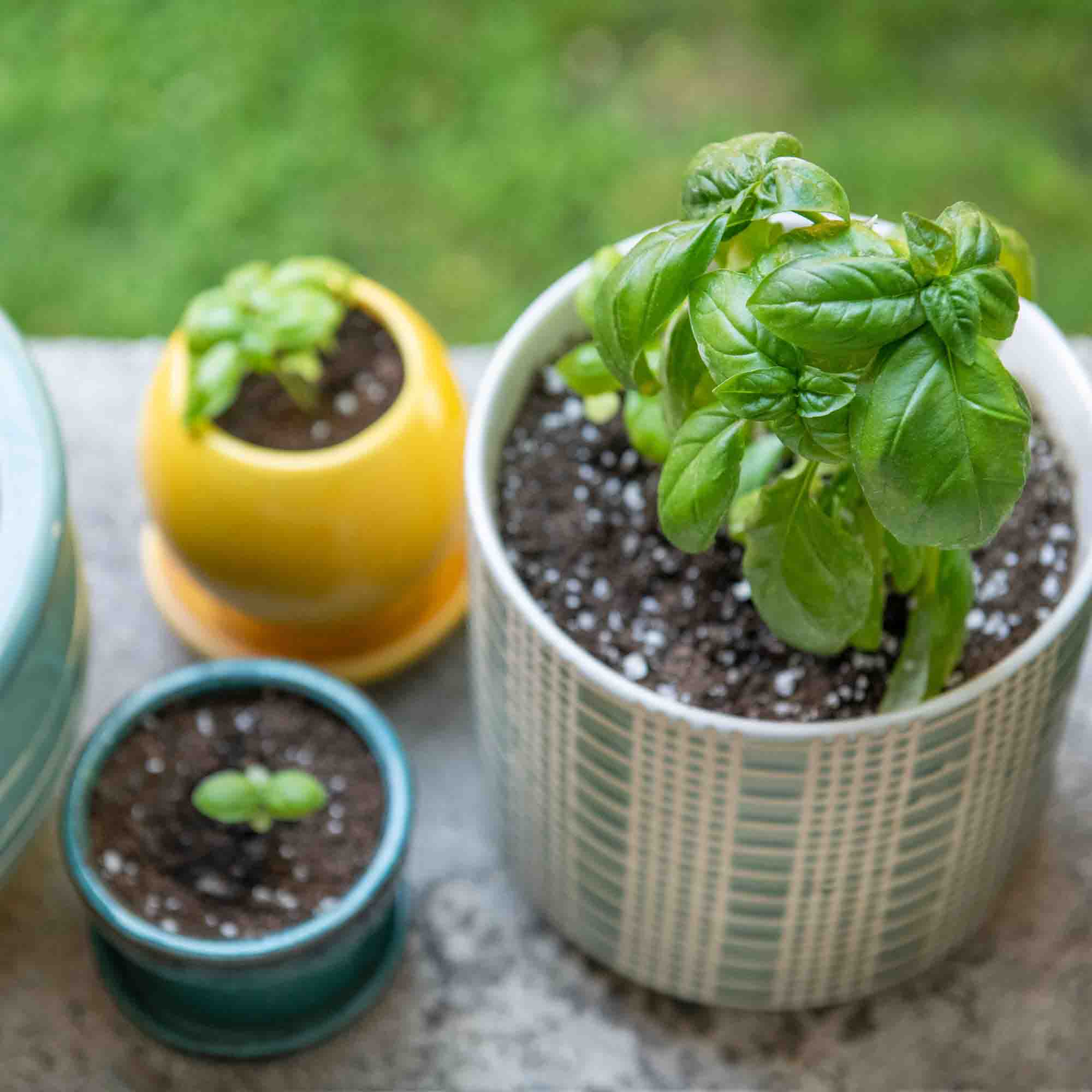 If you want to grow basil plants outdoors in the garden, dig a hole every 15 cm away, it's a good choice to bury the roots of the basil plants in the hole, and fill the stem with soil. You'd better compact the soil a little bit to expel the air from the soil.
If you want to grow basil plants outdoors in the garden, dig a hole every 15 cm away, it's a good choice to bury the roots of the basil plants in the hole, and fill the stem with soil. You'd better compact the soil a little bit to expel the air from the soil.
If you want to grow basil indoors in some kind of container, make sure that the container is big enough to hold all the basil plants you grow. Since basil grows very large, leave at least 15 cm between each basil plant.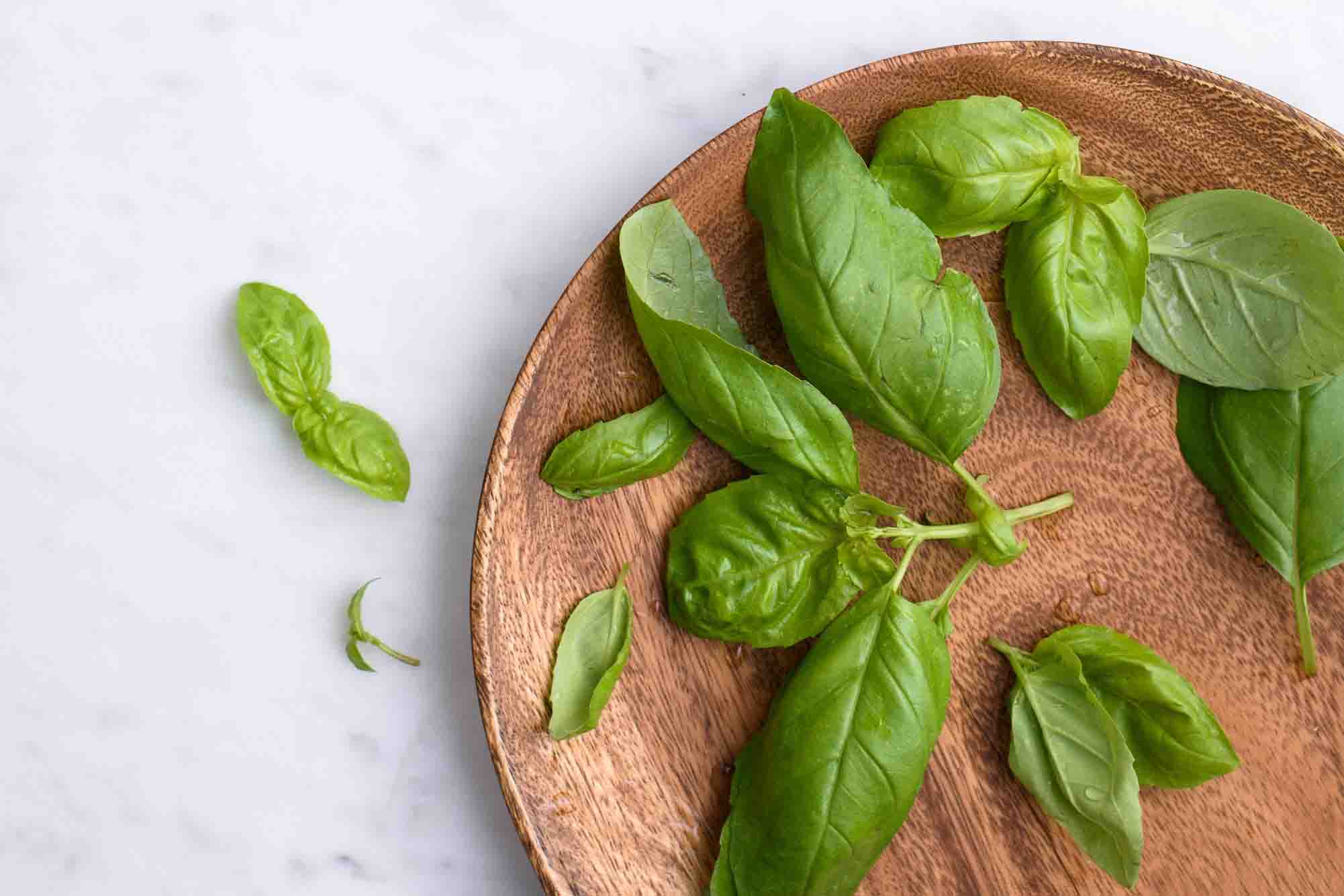 When the basil plants bloom, you'd better pinch off the flower and the two leaves under the flower. Flowering will change the hormones of basil, reduce the aroma of basil plants, and reduce the leaves that basil plants grow. This phenomenon of flowering and fruiting of basil plants usually occurs under conditions of particularly sufficient sunlight. If you don't pinch off the flower bones, you will find that the leaves of basil plants are getting thinner and thinner, and they won't be as fragrant as before.
When the basil plants bloom, you'd better pinch off the flower and the two leaves under the flower. Flowering will change the hormones of basil, reduce the aroma of basil plants, and reduce the leaves that basil plants grow. This phenomenon of flowering and fruiting of basil plants usually occurs under conditions of particularly sufficient sunlight. If you don't pinch off the flower bones, you will find that the leaves of basil plants are getting thinner and thinner, and they won't be as fragrant as before.
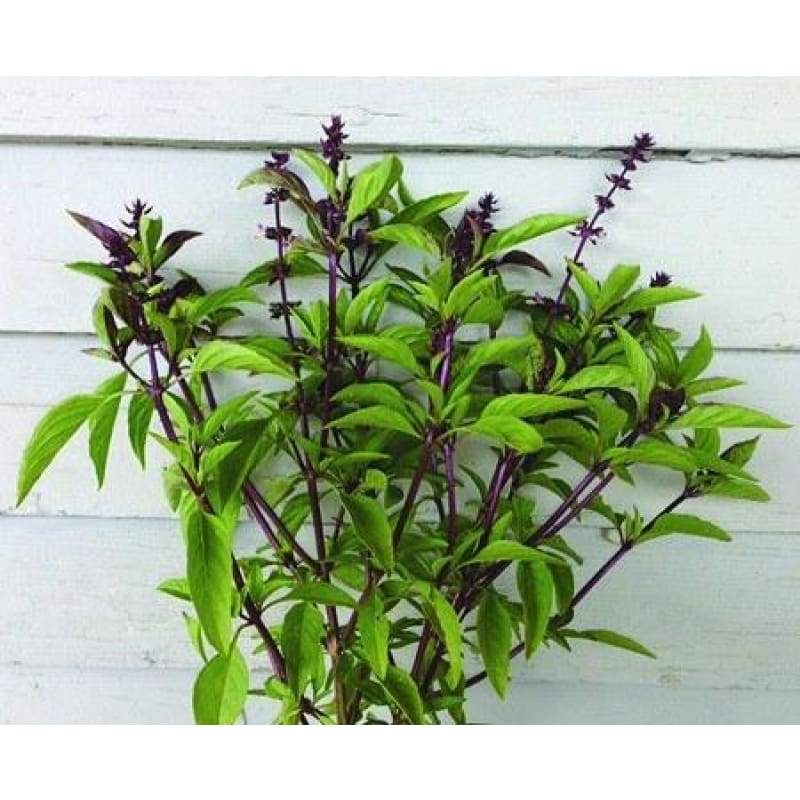 Pinching can make plants more vigorous and promote the continued growth of the stems and leaves of strong basil plants. This will also make plants grow denser.
Pinching can make plants more vigorous and promote the continued growth of the stems and leaves of strong basil plants. This will also make plants grow denser.
Do not pinch off the bottom of the stem, otherwise the basil plants will grow sparsely. What you want is lush basil. So topping must be picked from the top.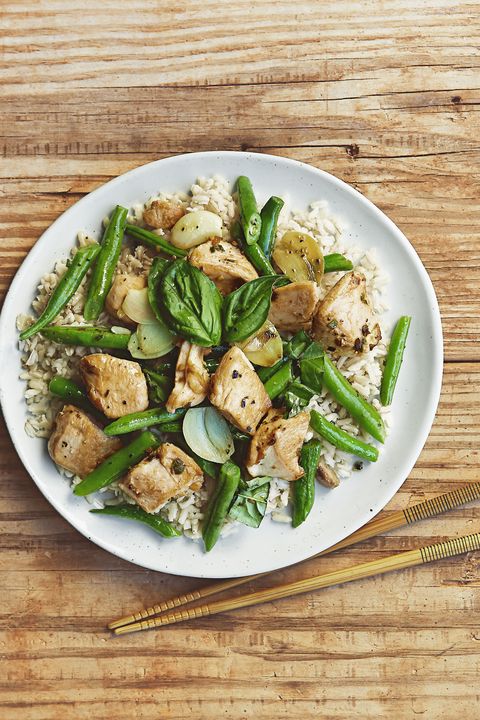 It is not a good idea to freeze the leaves of basil plants directly. But if you mash the basil first, you can store it in the freezer for several months. It’s a good choice to put the basil in the blender, add a little water, beat it into a puree, and put the basil puree in a fresh-keeping bag into the freezer for storage, and take it out when needed.
It is not a good idea to freeze the leaves of basil plants directly. But if you mash the basil first, you can store it in the freezer for several months. It’s a good choice to put the basil in the blender, add a little water, beat it into a puree, and put the basil puree in a fresh-keeping bag into the freezer for storage, and take it out when needed.
Basil plants can also be grown directly in the garden by growing basil outdoors, so you don't need to cultivate them in advance, so you can choose fast-growing varieties, such as lemon basil plants is a good choice. But in fact, all basil grows very fast, the basil sun requirements are not high, and it is more productive, you don't need to plant it in advance.
When planting directly in the garden, you'd better make sure that the surface of the soil is moist. But there are some rules that oppose excessive watering, saying that the surface of the soil should be kept slightly dry. But you must pay attention to the degree of dryness. Seeds or seedlings without deep roots are very fragile, and once the soil dries for a few hours, they can cause great damage.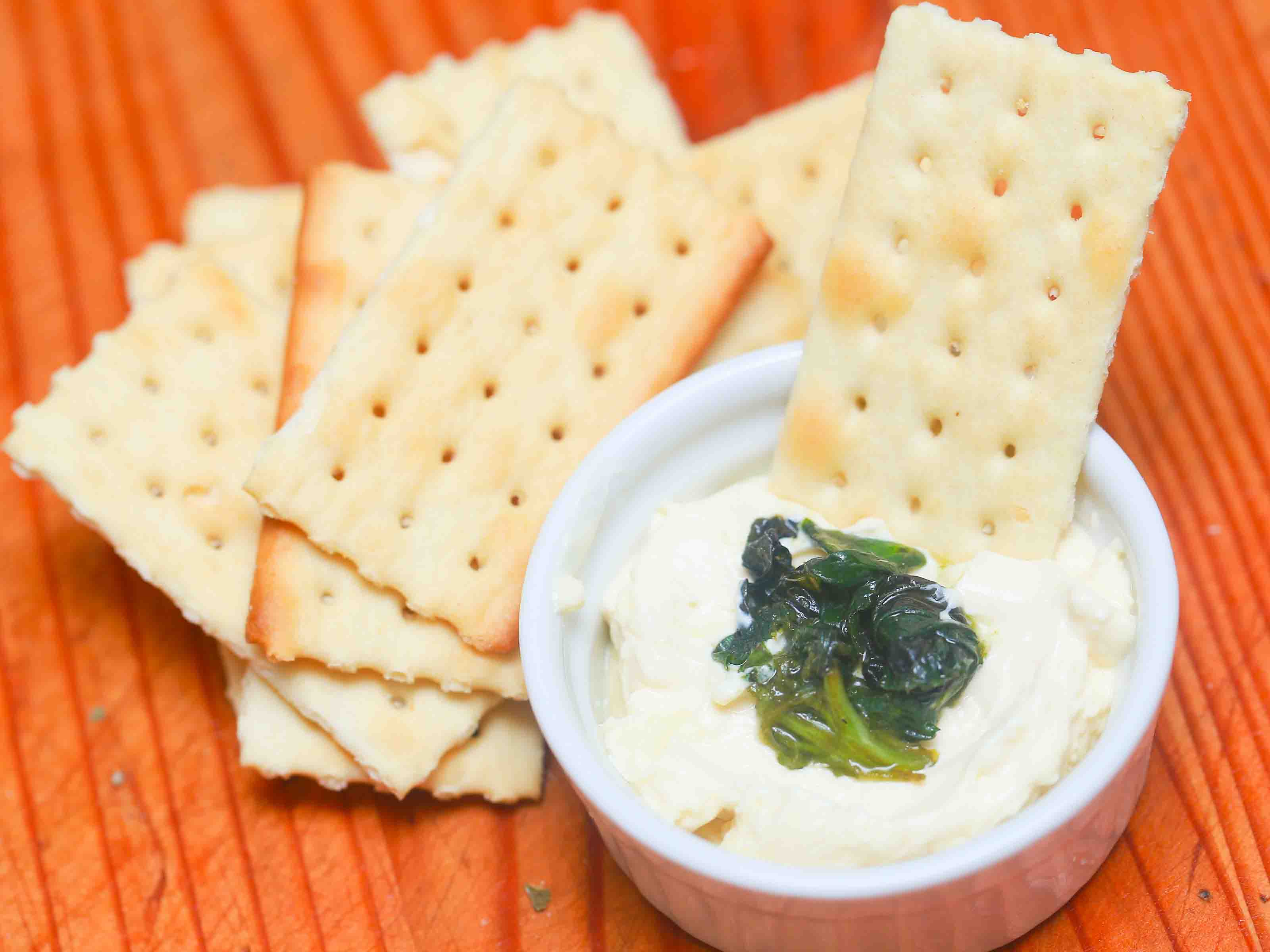 Watering the basil moderately is necessary. Water the flowers twice a day with warm water until the basil grows up.
Watering the basil moderately is necessary. Water the flowers twice a day with warm water until the basil grows up.
You can also cross-culture basil with other plants. It is said that basil will make tomatoes and pepper more intense, and will prevent worms and aphids. Don't ignore the opportunity to grow basil plants. There are many unexpected varieties of basil. Choose the one that is most useful and interesting for you.
Don't ignore the opportunity to grow basil plants. There are many unexpected varieties of basil. Choose the one that is most useful and interesting for you.
When moving basil plants from indoors to gardens, make sure that you have gradually allowed basil to adapt to the outdoor environment and sun requirements, instead of suddenly moving basil to growing outdoors, so that basil plants cannot adapt to changes in the environment.
Sowing basil Choose the types of basil plants you want to growSow basil plants indoorsPrepare the container and soil for sowing basil plantsGrowing basil from seedRemove the plastic film after the seeds germinateBasil plant careShift basinKeep the soil moistPinch off the buds of basil plantsWatch out for pests and moldHarvesting and using basil plantsHarvest and topping basil plantsEnjoy fresh basil plantsKeep basil in the refrigeratorFrozen basil plantsHints of basil plantingAttention of planting basil
Sowing basil
Choose the types of basil plants you want to grow
There are many varieties of basil plants, and each has a different fragrance. It is recommended that gardeners can check relevant information and find one or several varieties you like to plant. You can buy the corresponding seeds from the flower shop.Cinnamon basil has a sweet fragrance and can produce beautiful flowers with a charming fragrance. Lemon basil contains citral. Citral is the scent of citrus fruits, and lemon basil also smells of strong lemon flavor.
Purple basil is mostly for ornamental purposes, with a charming fragrance and gorgeous flowers.
Some basil is perennial and will continue to grow in the next year after withering. For example, African blue basil (which has blue texture on the leaves) and Thai basil. But most basil is annual, and you have to plant a new batch every year.
Greek basil and fragrant basil have higher growing conditions, but they can grow tightly small bunches of leaves, which are suitable for viewing and gardening.
Sow basil plants indoors
You'd better grow basil indoors 4-6 weeks before the last frost. Basil likes warmth and sunshine, so it is safer to plant indoors and prevent it from being damaged by frost.If you live in a hotter area, you can also grow basil outdoors.

Prepare the container and soil for sowing basil plants
It's a good choice to fill a square basin or a separate container with equal amounts of vermiculite, perlite, and peat soil. You'd better sightly press the soil to remove air. It's necessary to wet the soil with water to prepare a suitable environment for the seeds to germinate.Growing basil from seed
It's a good choice to bury one or two seeds in each container, then lightly cover with a layer of soil. You'd better wrap the flowerpot with plastic wrap to keep the soil moist. Putting the flower pot under the window of the sun is necessary, and then uncover the film twice a day, and spray water into the soil to keep it moist.Remove the plastic film after the seeds germinate

Basil plant care
Shift basin
When the basil plants grow 1-2 mature leaves, you can move the basil to the garden or formal flowerpot. Basil plants are not resistant to freezing, so don't move them outdoors prematurely. Gardeners should also pay attention to the basil sun requirements. You'd better move the basil to a place with plenty of light and plant it in soil with good drainage.
If you want to grow basil indoors in some kind of container, make sure that the container is big enough to hold all the basil plants you grow. Since basil grows very large, leave at least 15 cm between each basil plant.
Keep the soil moist
Basil plants can grow well in soil with good drainage and cannot be soaked in water forever. For mature basil, water should be watered once every morning to meet the basil growing conditions, so as to give the basil sufficient time to absorb and evaporate water and prevent the soil from drying out at night.Pinch off the buds of basil plants

Watch out for pests and mold
Basil plants tend to attract Japanese beetles. The best way to eliminate pests is to pick out and catch the beetles yourself. If your basil has a tendency to be infested by mold, it may prove that the basil sun requirements are not met, or it is too dense. It's time to dig out the small basil to give the big basil plenty of room to grow. Gardeners should pay attention to basil plant care.Harvesting and using basil plants
Harvest and topping basil plants
As the plant matures, when the basil grows tall enough, remove the top two leaves. If you look closely, you will find that there are two tender leaves at the root of each leaf. If you cut off the stem between them, the two tender leaves will grow. When topping, you'd better cut as close to the young leaves as possible, but be careful not to hurt the two leaves.
Do not pinch off the bottom of the stem, otherwise the basil plants will grow sparsely. What you want is lush basil. So topping must be picked from the top.
Enjoy fresh basil plants
After washing the basil plants, you can use them to make green sauce, or use tomatoes and mozzarella to make tomato cheese salad.Keep basil in the refrigerator
You may harvest a lot of basil plants and you can't eat a meal. You can plan to store basil in the refrigerator. You ought to wash the leaves, dry them, wrap them in a paper towel and place them in an airtight container and put them in the refrigerator.Frozen basil plants

Hints of basil planting
If the basil seedlings are thin and slender, it may be that there is not enough sunlight.Basil plants can also be grown directly in the garden by growing basil outdoors, so you don't need to cultivate them in advance, so you can choose fast-growing varieties, such as lemon basil plants is a good choice. But in fact, all basil grows very fast, the basil sun requirements are not high, and it is more productive, you don't need to plant it in advance.
When planting directly in the garden, you'd better make sure that the surface of the soil is moist. But there are some rules that oppose excessive watering, saying that the surface of the soil should be kept slightly dry. But you must pay attention to the degree of dryness. Seeds or seedlings without deep roots are very fragile, and once the soil dries for a few hours, they can cause great damage.

You can also cross-culture basil with other plants. It is said that basil will make tomatoes and pepper more intense, and will prevent worms and aphids.
Attention of planting basil
When watering, you'd better not wet the leaves of basil plants. Unless you are applying leaf spray or foliar fertilization because the leaves can sometimes be infested with insects.
When moving basil plants from indoors to gardens, make sure that you have gradually allowed basil to adapt to the outdoor environment and sun requirements, instead of suddenly moving basil to growing outdoors, so that basil plants cannot adapt to changes in the environment.
Latest Updated
- Benefits of Bugleweed - 7 Science-backed Health Benefits
- Bugleweed Dangers & Side Effects - Is It Poisonous?
- How to Plant Evergreen Trees - What You Should Know
- When to Plant Evergreens - Grow Guide for Evergreen Trees
- 12 Wonderful Evergreen Shrubs for Your Garden
- 12 Popular Evergreen Plants with Pictures for Beginners
- When And How To Prune A Lilac Bush Like a Pro
- How to Grow & Care for Lilac Vine (Hardenbergia Violacea)
- Japanese Lilac Tree (Syringa Reticulata) Care & Propagation Guide
- Shumard Oak Pros and Cons - What to Know
Popular Articles
- Winter maintenance of Antirrhinum Majus
- How to Grow Terminalia Mantaly Tree
- How to Grow and Care for Crossostephium Chinense
- How to grow Antirrhinum Majus in spring
- Peristeria Elata (Dove Orchid) Profile: Info & Care Guide
- Underwatered Snake Plant (Sansevieria Trifasciata) - Signs And How To Fix
- How to Care for Brazilian Jasmine Plant (Mandevilla Sanderi)
- How to Grow & Care for Graptopetalum Purple Delight in Summer
- Rosa Chinensis (China Rose): Plant Growing & Care Tips
- How to Care for Baby Sun Rose (Aptenia Cordifolia)
